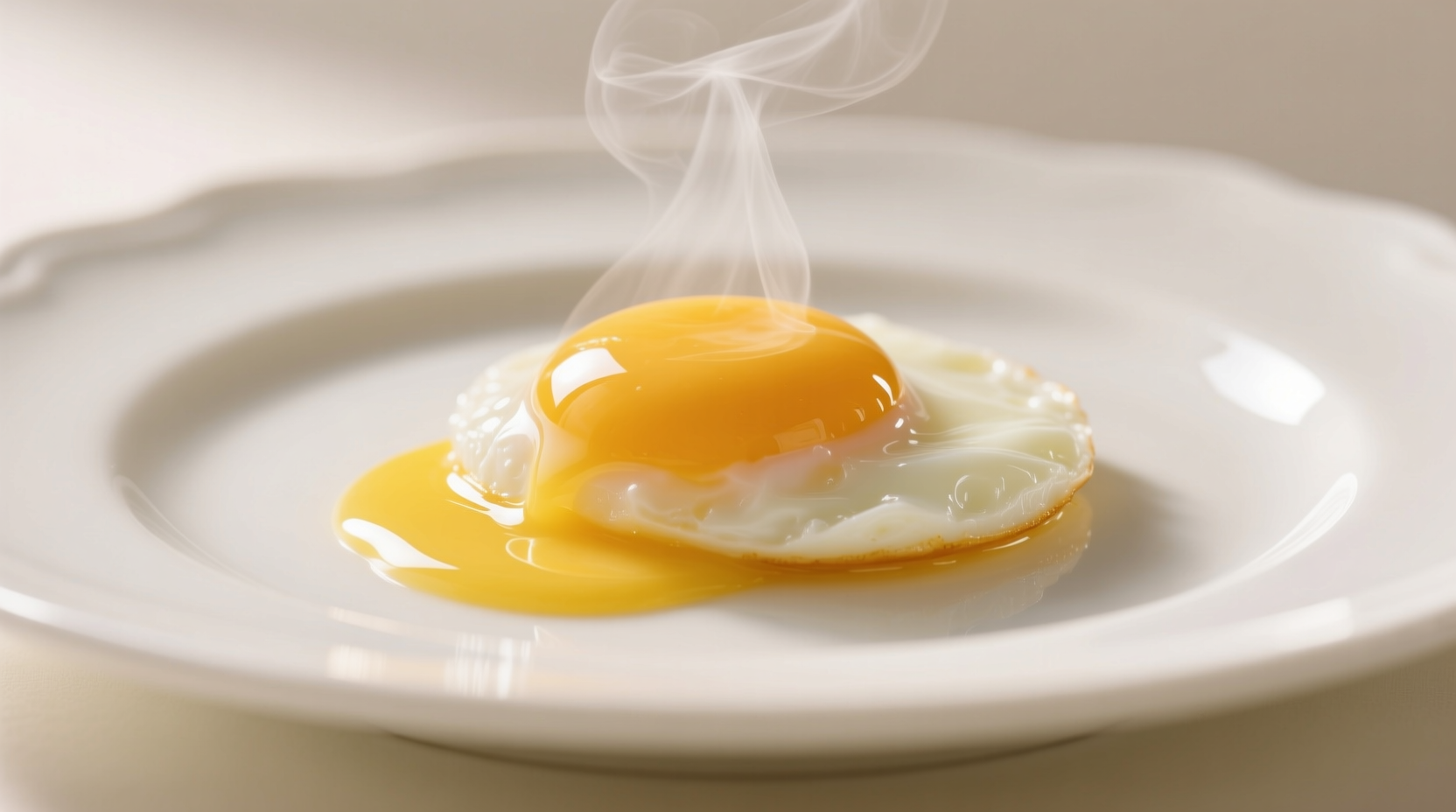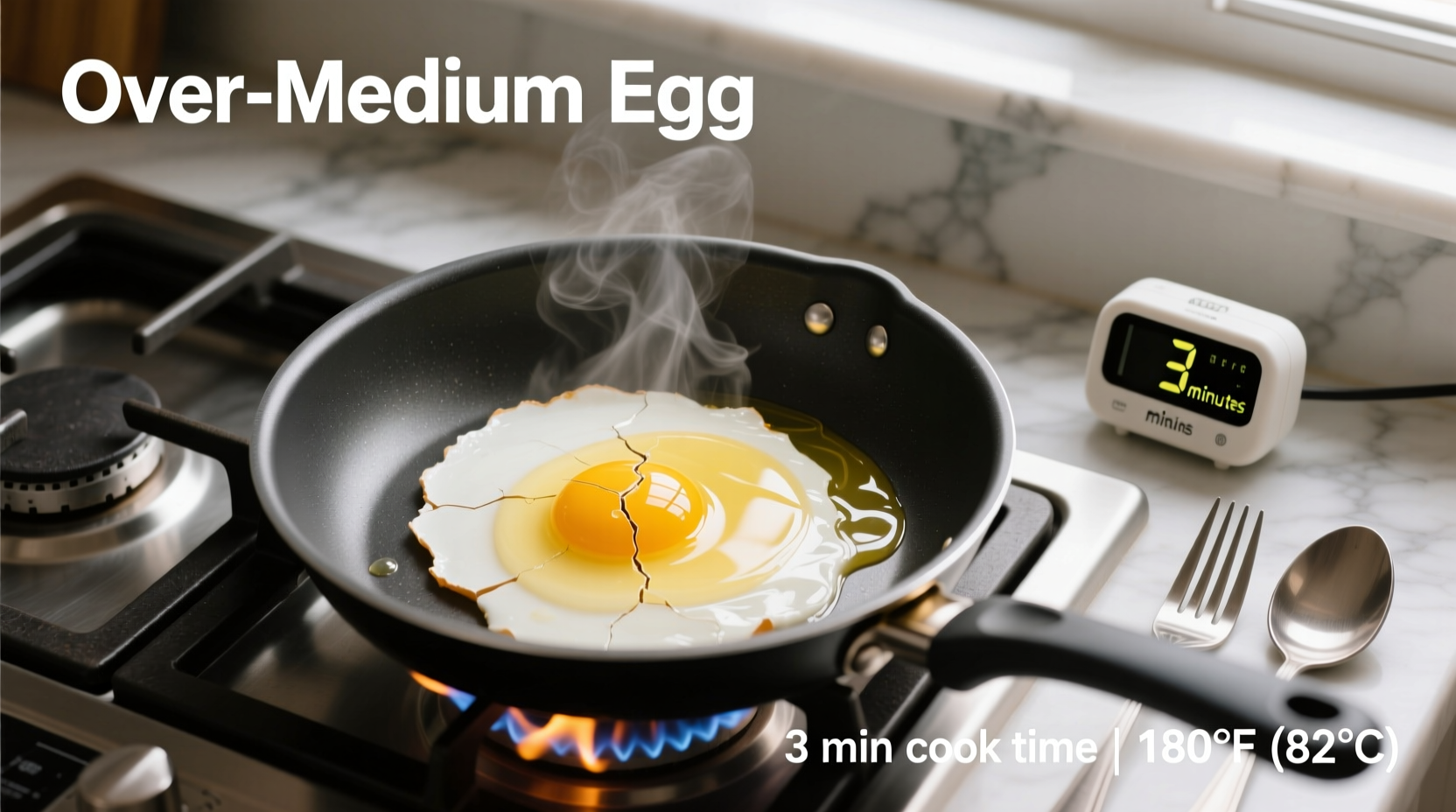Cooking a perfect over medium egg requires heating a non-stick skillet over medium-low heat, cracking an egg into the pan, and cooking for 2-3 minutes until the whites are fully set but the yolk remains slightly runny. Flip gently and cook for an additional 30-60 seconds for that ideal semi-liquid yolk texture with completely set whites.
Mastering the art of cooking over medium eggs transforms your breakfast routine with restaurant-quality results you can achieve at home. This precise cooking technique delivers the perfect balance between a fully set white and a lusciously runny yolk that's safe to eat when prepared correctly. Whether you're a beginner cook or looking to refine your breakfast skills, this guide provides the exact steps, timing, and visual cues you need for consistent success every time.
The Over Medium Egg: What Makes It Special
An over medium egg sits perfectly between over easy and over well on the doneness spectrum. While over easy features a completely liquid yolk, over medium offers that desirable semi-runny consistency that's ideal for dipping toast or creating beautiful plate presentations. The whites should be completely set with no translucent areas remaining, while the yolk maintains its signature golden flow.
| Egg Doneness Level | White Texture | Yolk Texture | Cooking Time (Per Side) |
|---|---|---|---|
| Over Easy | Fully set | Completely liquid | 2-3 min / 10-15 sec |
| Over Medium | Fully set | Semi-runny | 2-3 min / 30-60 sec |
| Over Well | Fully set | Fully cooked | 2-3 min / 2-3 min |
Your Essential Over Medium Egg Toolkit
Before you begin, gather these kitchen essentials that make all the difference in achieving perfect results:
- Non-stick skillet: 8-10 inch size provides ideal heat distribution
- Butter or oil: 1 teaspoon of unsalted butter or neutral oil like avocado oil
- Spatula: Thin, flexible silicone or plastic spatula for gentle flipping
- Fresh eggs: Grade A large eggs at room temperature cook more evenly
- Timer: Critical for precision cooking (don't rely on guesswork!)
Step-by-Step Over Medium Egg Cooking Method
Preparation Phase: Setting Up for Success
Remove eggs from the refrigerator 15-20 minutes before cooking. Room temperature eggs cook more evenly than cold ones straight from the fridge. While your eggs come to temperature, prepare your workspace with all necessary tools within reach. This prevents rushing during the critical cooking phase.
Cooking Process: Precision Timing Matters
Follow these exact steps for perfect over medium eggs:
- Place your non-stick skillet on the burner and heat over medium-low heat (about 3 on a 1-10 scale)
- Add 1 teaspoon of butter or oil, allowing it to melt and coat the surface evenly
- Crack your egg into a small bowl first (this prevents shell fragments and ensures gentle transfer)
- Slide the egg gently into the center of the hot skillet
- Set your timer immediately for 2 minutes and 30 seconds
- As the egg cooks, you'll notice the whites turning opaque from the edges toward the center
- When the timer sounds, check that the whites are completely set with no translucent areas remaining
- Carefully slide your spatula under the egg, lift slightly to ensure it's not sticking, then flip in one confident motion
- Set your timer for 45 seconds and monitor closely
- When the timer sounds, gently press the yolk with your spatula to test consistency—it should offer slight resistance but still flow
- Immediately transfer to your plate to prevent overcooking

Pro Tips for Consistent Results
Even experienced cooks encounter challenges with egg preparation. These professional techniques ensure success regardless of your kitchen conditions:
- Heat control is critical: If your butter browns immediately, the pan is too hot—start over with a cooler temperature
- Don't rush the flip: Wait until the whites are completely set before attempting to flip
- Steam trick: Add 1-2 teaspoons of water to the pan after flipping and cover briefly to help set the top white without overcooking the yolk
- Seasoning timing: Salt before cooking can make eggs watery—season after flipping for best texture
- Freshness matters: Older eggs spread more in the pan; use the freshest eggs possible for neater shapes
Food Safety Considerations for Perfect Eggs
According to the USDA Food Safety and Inspection Service, egg whites fully coagulate at 145°F (63°C), which is the minimum safe temperature for consuming cooked eggs. The key to safely preparing over medium eggs lies in ensuring the whites reach this temperature while maintaining the yolk's desired consistency. When cooked properly using the timing guidelines above, over medium eggs meet food safety standards while delivering that perfect semi-runny yolk texture. The FDA's Egg Safety guidelines emphasize that fully set whites indicate proper cooking temperature has been achieved.
Troubleshooting Common Over Medium Egg Problems
Egg Sticking to the Pan
This typically happens when the pan isn't properly preheated or when using insufficient fat. Always ensure your butter or oil is shimmering but not smoking before adding your egg. A properly seasoned cast iron skillet can also provide excellent non-stick properties for egg cooking.
Overcooked Yolks
If your yolks are consistently firm, you're likely cooking the second side too long. Reduce the flip-side cooking time by 10-15 second increments until you achieve your preferred consistency. Remember that carryover cooking continues even after removing from heat.
Undercooked Whites
Translucent whites indicate insufficient cooking time or heat that's too low. Increase your initial cooking time by 15-30 seconds while maintaining medium-low heat. The whites should be completely opaque with no jelly-like areas remaining before flipping.
Perfect Pairings for Your Over Medium Eggs
Over medium eggs shine when paired with complementary breakfast items that take advantage of that beautiful runny yolk. Try these perfect combinations:
- On top of avocado toast for a protein-rich, creamy breakfast
- Alongside crispy hash browns for the ideal textural contrast
- As the crowning element on breakfast sandwiches
- Served over creamy grits or polenta for a Southern-style breakfast
- With a side of roasted tomatoes for a balanced flavor profile











 浙公网安备
33010002000092号
浙公网安备
33010002000092号 浙B2-20120091-4
浙B2-20120091-4